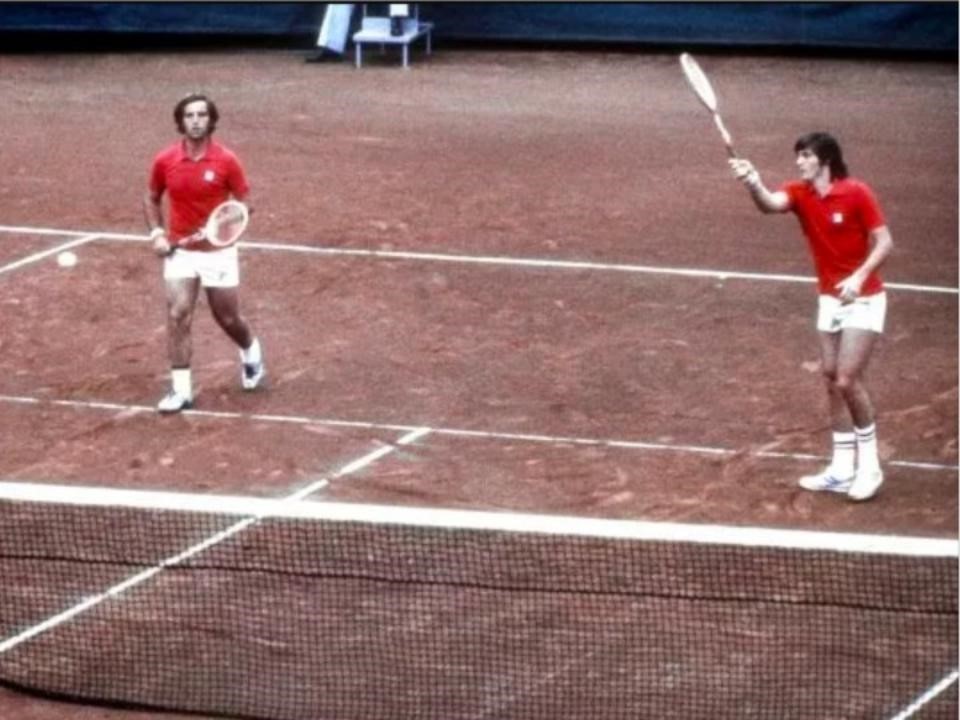
It took 76 years before four Italian tennis players, led by a true tennis legend, first won the Davis Cup, the world's oldest tournament devised by four members of the Harvard University tennis team to challenge the British. And another 47 years to raise to the sky again the famous trophy awarded to the winners, known around the world as the "silver salad bowl."
Two incredible victories, achieved in two different eras for the "Bel Paese," both politically and economically and socially, but which have at least one thing in common: booming television ratings.
Tennis, a sport with elitist contours originally, became a sport for everyone, even the working classes, precisely because of its success in the Davis Cup in 1976. And in the last twenty years it is the most played individual sport in Italy and is followed on television by millions of fans. Suffice it to say that in the country where soccer is a religion, there is no television channel dedicated to this great passion, but there has been for fifteen years Supertennis Tv, a single-issue channel that broadcasts tennis matches all day long.
But let's go back to the Davis Cup, or rather let's start with the story of the one in 1976 that is still considered a legendary story in Italy, so much so that it is told in books and television series on Netflix.
That year, four experienced and winning tennis players, Adriano Panatta, Paolo Bertolucci, Corrado Barazzutti, and Tonino Zugarelli, led by the legendary Nicola Pietrangeli, the player who has the absolute world record for Davis Cup appearances and victories, reached the final against Chile, a nation that has never achieved much in tennis.
In 1976, Italy was voting to renew the nation's government, and for the first time the Communist Party came close to winning against the Catholic Democrats. It was a difficult period, known in history books as "the years of lead," because every day there were bombings, massacres and shootings with communist and neo-fascist extremists terrorizing citizens. Those were also the years of the great energy crisis, with Italians forced to leave their cars at home because fuel was rationed. It was a country that, after the economic boom of the 1960s, had gone backwards and was experiencing a deep social crisis.
With this climate, tennis Italian tennis knew it had to challenge Chile in the Davis Cup final. In 1976 in Chile the military dictator Augusto Pinochet ruled, and suddenly a political debate began in Italy that lasted for weeks. The Communists did not want Italy to face the Chileans at the Estadio Nacional in Santiago, Chile, which had become one of the symbols of the regime's repression because, in previous years, it had been used as a concentration camp for political opponents. The government, led by Catholic Democrats and Social Democrats, however, took no position. Eventually, the Italian Tennis Federation authorized the participation. On the evening of the decisive challenge, the doubles match, practically all of Italy was glued in front of the television to watch the match.
It was then that Italy's most representative player, Adriano Panatta, after convincing his partner Paolo Bertolucci, decided to take the field wearing a red shirt instead of the Italian blue one (even though no one saw it in Italy, because television was still broadcasting in black and white). They wore it as a tribute to the victims of Pinochet's repression, and that gesture represented for Italians almost the same as the black glove worn on the 200-meter podium at the 1968 Mexico City Olympic Games by Tommie Smith and John Carlos did for African Americans. Millions of Italians rejoiced in front of the television but only for the victory on the field; in fact, when the four winners returned to Italy, no one waited for them at the airport except the Communist political protesters.
Forty-seven years later, in November 2023, Italy has finally won the second Davis Cup, in a totally different scenario. The three protagonists, Matteo Arnaldi, Lorenzo Sonego, and Jannik Sinner are very young and not so famous, except for Sinner who is No. 4 in the world. The opponents to beat are not the unknown Chileans, but Australia, the nation that after the United States has won the Davis Cup the most times (28 against the States' 32). The Italian government is supported by three right-wing parties who won the elections. There are no more bombings or shootings. The energy crisis due to the Russo-Ukrainian war lasted only a few months, and Italians continue to take cars every day. Television is in color, but only the elderly see it because young people use smartphones, tablets and PCs.
But the passion for tennis is even stronger than in 1976, and when an Italian plays, even young people sit on the couch and turn on the television. On the day of the decisive doubles match, with Sinner and Sonego on the court, nearly 10 million Italians were in front of the television. And the two Italian tennis players accomplished the feat by bringing the Davis Cup back to the Bel Paese. When they came back to Italy with the cup, they were greeted by a cheering crowd, with no protesters. This time it was the victory of all Italians, no one excluded.



